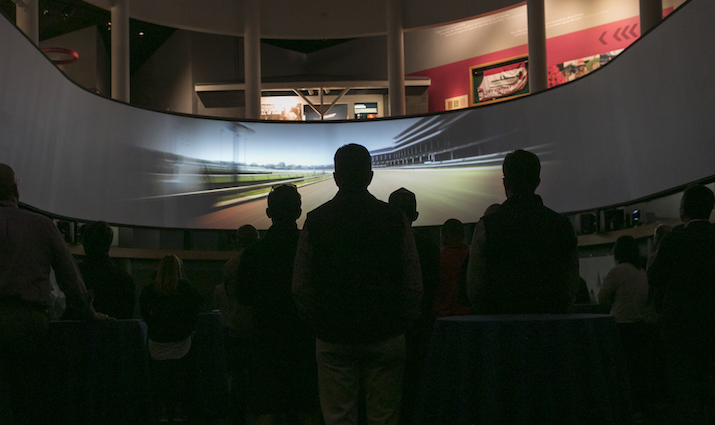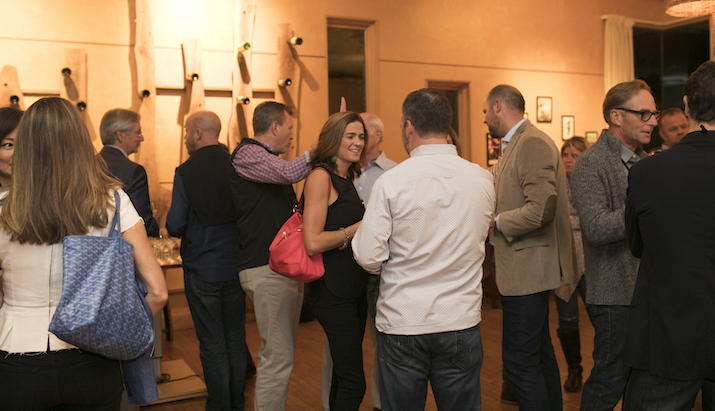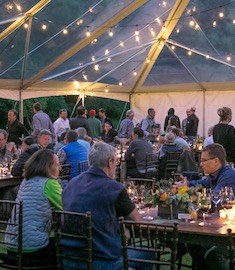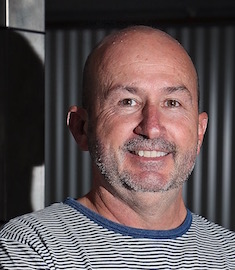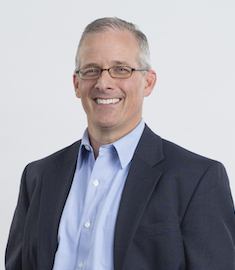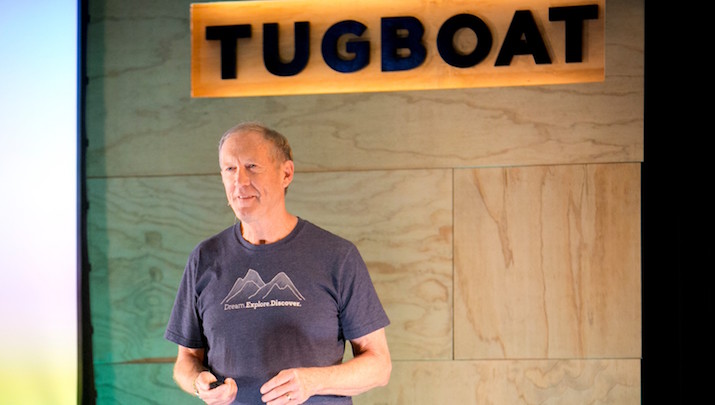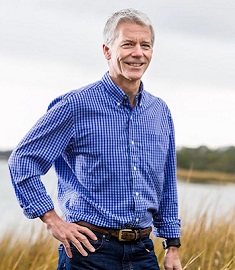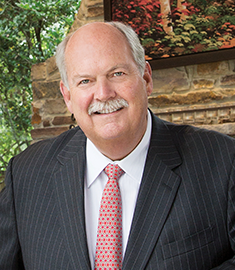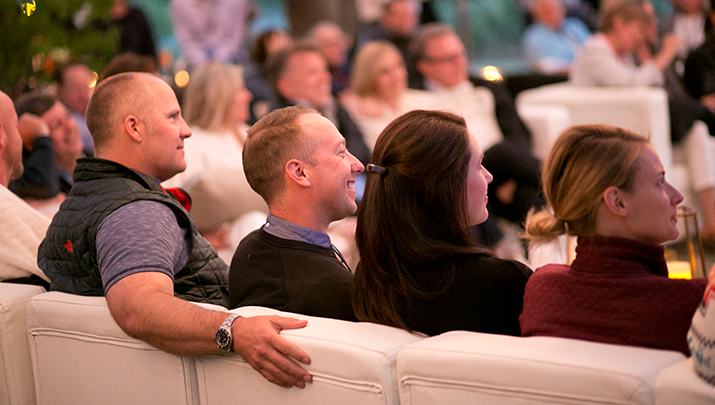The Evergreen Advantage
There are freedoms and advantages that come with being an Evergreen company. In this Tugboat Institute Summit video, our members share what being Evergreen allows them to do that they wouldn’t be able to do otherwise. Some lessons are practical; others are personal. All of them are true.
Featuring: Don MacAskill, Will Snook, Dan Kenary, and Wynne Odell
Never Share These Goals
As a child, I had a lot of health problems. Not knowing how long this life thing would last, I was in a rush to go out and build something at a young age. So I left high school at age 16 to go to the University of California, Berkeley, where in 2009 I started inDinero, my Evergreen company, which provides financial tools and data for small businesses.
From the start, I knew I wanted to build a profitable company that I would never sell. That was a strange idea to a lot of people. But I’ve built this for me for the long haul because I don’t ever want to start from scratch again—and so that I will never have to work for someone else. In order to make this intense drive sustainable — for me and for my company — I’ve had to get creative.
To manage my life and company goals and make them compatible, I came up with a personal operating system. This system is a combination of daily rituals and diligent goal-tracking on a spreadsheet that keeps me — and inDinero — on track and forward-thinking.
First, my daily priming ritual: Every day I pump some intense music and put on a 22-minute timer before running through a focused meditation on different topics. It’s a combination of three minutes focused on gratitude, five minutes on what goals I’ve accomplished, five minutes on what goals I’d like to accomplish, and 10 minutes on illuminating my beliefs and journaling. This routine really gives me a plan of attack for that day and week.
The spreadsheet where I outline my 50-year vision, mission, and goals is something I’ve been building for two years. On this simple document, I track my week-to-week progress and outcomes. Originally I had 10-, five- and one-year plans just for my business. I expanded this to include my personal goals, such as romance, career, physical health, and financial success. When I put a desired result on my spreadsheet, I then track my progress until I am successful.
A lot of people just let the day unfold. Living that way won’t help you achieve maximum potential. Some people say, “it must be so stressful to have goals hanging over you all the time,” but I think it’s more stressful not having a plan of attack.
Given my experience, I have some tips to offer Evergreen leaders interested in creating your own personal operating system:
Don’t be too committed to what you first put down. Be open to having your goals and desired outcomes change over time. Your goals may get bigger and bolder. Be open-minded, and you might be surprised.
I recommend modifying your plan monthly. You might want to consider archiving for further reflection — although I choose not to do this, as I’d rather push forward and not dwell on the past.
This document is and should be very private. I have some outlandish goals, so I need to minimize the naysayers. While I have shared it with a few close friends for feedback, I don’t recommend wide sharing. Only give it to people who know you really well; otherwise you’re going to end up having a lot of unproductive conversations. And never share this with your employees — some of your personal goals will counter their wishes. My goal is to build a huge company, but I don’t want to work 60 hours a week. That’s a good practice, but an employee might misinterpret it as, “Jessica just wants to fly airplanes and start other companies, and she must be distracted from the business in her fun, great life!” Don’t share.
Also, I make bigger leaps and bounds when I work on this in a two-day retreat environment. Take your friends, go somewhere warm and fun, and engage over your goals and visions for life. Get serious about making some changes and doing something big. I’ve organized several of these retreats for other women running businesses.
Since I’ve started this personal operating system, it has given me grit and endurance and helped me commit to the Evergreen philosophy. Having a long-term horizon keeps me focused on the business and forces me to grapple with my beliefs and constraints in hitting my goals. I’ve grown so much personally in these two years — and I will soon be tripling my business.
I’m convinced that if more people did longer-term life planning, looking out 50-plus years, we’d see more Evergreen businesses. The act of diving into your personal goals and desires on a more macro level lends itself to the Evergreen lifestyle. I challenge you to articulate what you really want—doing so just might help you achieve your goals in businesses and in life.
Jessica Mah is Founder and CEO of inDinero.
Early Stories
We love hearing about the memorable early stories that defined our Evergreen companies. They often evoke the passion and perseverance that’s especially important to bootstrapping a company. Whether it’s a memorable employee, a disastrous situation, or a nickname that evolved into a badge of honor, our members recall the details in their own words.
Featuring: Jay Wilkinson, Stephane Fitch, Courtney Kingston, Jairemy Drooger, Amy Simmons, Daniel Goldstein, and Steven Jacob
Unpacking Tugboat Institute Summit
When I joined the Tugboat Institute team in May of this year and sat in on my first team Huddle, planning for Tugboat Institute Summit 2018 was reaching its peak. That first week and throughout the days that followed, leading up to the event’s start on June 26, all things Tugboat Institute Summit were front and center. The commitment of the Tugboat team to ensuring that each attendee had an extraordinary and inspiring experience was clear, as was the joy and gratitude for the opportunity to gather this group of Evergreen leaders to learn and inspire one another in our stunning mountain town.
What I couldn’t know in those weeks was what the event would actually feel like. Because you do “feel” the Tugboat Institute Summit experience. The generosity and wisdom that come together in this week are tangible, as emotions and knowledge are shared openly among members.
From my first introductions to new members at our inaugural First Year Orientation, I saw how quickly the armor of professional personas was relinquished, giving way to warm, personal interactions. As new members met one another and learned what they could look forward to in the days ahead, members who had experienced the event shared insight into how to make the most of the gathering and answered questions to ensure those attending for the first time felt at home and well-informed.
Moving from that First Year Orientation through the first evening’s events reaffirmed the spirit of connection and curiosity that would continue to fuel the week’s activities. As we gathered for dinner, the greetings and conversation among members—old and new—spoke to the friendships and professional respect that bind this group. The laughter and strategizing that followed as the group worked in teams to build fantastical structures in the first icebreaker activity reflected what everyone was already feeling: this was going to be an amazing week.
As they do each year, the TED-style talks that began on day two displayed the defining characteristics of our Tugboat Institute Summit attendees: deep wisdom paired with deep understanding. Greg Twardowski brought the principles of People First and Purpose to life in his presentation, as he described the loyalty and commitment of his employees and the emotional connections that have been fundamental in the growth of his Evergreen security business. Greg set the tone for the candid, heartfelt talks that would follow throughout the week.
Alongside the deeply personal stories of Purpose present in this year’s talks was a parallel thread of practical application and strategy, offering the CEOs, Presidents, and Founders gathered tactical steps and insight to bring home to their businesses. A panel discussion led by Dave Whorton, with Spencer Burke, of the St. Louis Trust Company, Kim Sheehy, of Fidelity Family Office Services, and Loren Feldman, Senior Editor at Forbes, offered welcome insight and ideas for founders and CEOs of multi-generational family businesses.
Thursday’s talks provided further lessons, both practical and profound. Among the day's presentations, Tom Rosztoczy shared the story of Stotz Equipment’s growth through acquisitions; Bobby Jenkins spoke to the foundation of family (and Texas A&M) that guides ABC Home and Commercial Services, and Jay Wilkinson described the deeply rooted culture present at Firespring.
There could have been no better conclusion to this year’s presentations than Joe Motz’s deeply moving talk, “Finding the Joy in Unpacking.” Initially hesitant to speak at Tugboat Institute Summit, Joe delivered a talk that connected all the pieces of personal growth and professional success for many members. In offering his own journey of letting go of that which did not serve him to more fully embrace positive attitudes and practices—in business and in life—Joe’s talk ignited the better spirit of Tugboat Institute members.
Whether a member’s ah-ha Evergreen moment this year came though one of the presentations, in the group art project with Heather Hansen, on the hiking trail, or in a one-on-one-conversation with another member, our hope is that all who attended returned home inspired and recommitted to building lasting, purpose-driven, and private companies. As a team, we are so grateful to have shared another Tugboat Institute Summit with our members and guests, and we hope that everyone who attended will carry the momentum of the experience forward in life and in work.
Diana Price is the content manager at Tugboat Institute.
Brewing an Evergreen Company
I was bitten by the beer bug years ago while traveling in the U.K. I picked up an odd job looking after the beer barrels in the cellar of a pub. It was fun, but it also made me realize I loved beer much more than as just an after-hours drink — I wanted to make beer my life. So when I moved back home to Australia, I found a job working for a big brewer, and eventually relaunched a craft brewery for Foster’s. While the work was rousing, I wasn’t a big fan of the corporate life, so in 2008, I started my own brewery, Stone & Wood, with three partners.
Right away we wanted to build a sustainable Evergreen business that wasn’t just about the founders living their dream. It had to be more than that. We wanted to grow a team of people who would help us create value for all stakeholders, and with whom we would share the upside.
It took a few years for us to get to the point where we could make that happen, but in 2013 we launched our employee share program. It’s a customized program where we make an annual offer to all employees who have been with us more than a year. They receive a number of shares, which are issued through an interest-free loan (paid down by dividends). Through annual valuations, these shares have grown fivefold since our first offer four years ago.
This is the cornerstone to putting our People First. By making our employees our partners, we set the stage for growth that will benefit all of us. Which is why every year, we take a group of employees who have hit their five-year-anniversary mark on a trip to Germany.
This trip isn’t just about drinking beer and having a good time — although of course there is plenty of that. The real goal is for them to see the Mittelstand — small- to midsize German multigenerational family businesses — which tend to take more of a custodial approach to their operations. One of our favorite breweries in Tettnang is run by a man named Fritz Tauscher. Fritz’s father, Fritz, inherited the brewery from his father, Fritz. This small business is very much part of the community, and it will most likely be a sustainable brewery for many more Fritzes to come. They imbue their employees with a real responsibility to make sure the business is in as good a shape as possible to pass it on. They leave it healthier than it was.
This mindset spreads to the community. In a highly fragmented market, most pubs in German towns sell only one brand of local beer as an expression of intense loyalty to these local companies. This creates a sense of pride in both the community and the owners who don’t want to sell their breweries that have been in the family for generations. We understand that pride and want our employees to feel it too.
I’ve worked at big corporations where we were driven to grow at all costs. Multigenerational businesses don’t have that pressure. They are making decisions for the long term and not for growth’s sake. On the annual trip, we like to see our employees meet with our eighth-generation malt suppliers so that they can feel this energy, this satisfaction in long-term sustainability. This, in turn, helps them take a longer view of our business, which changes how they adapt to trends and how they view the relevance of our brand. After their tour in Germany, our employees come home with a lot of stories and experiences that provide a greater understanding of what we are trying to build here.
We have grown rapidly to become the second-largest private brewer in Australia, and therefore there is a significant legacy to sustain. The four families who own most of Stone & Wood are currently working through a succession-planning process so that we can pass the torch to the younger generations.
But by putting our People First and taking a long-term view of capital investment, I think we’re going to be in good shape. And I hope that Australia views us as a family business that has long established its Evergreen roots and is a source of pride for everyone who works here and who enjoys our beer.
Jamie Cook is Co-Founder and Executive Chairman of Stone & Wood Brewing Company.
Safety in Numbers
Ever since I was a junior in high school and took my first accounting class, I’ve loved working with numbers. And just as numbers line up for me with predictable ease, I knew from a young age that I needed a clearly articulated career path. I received my accounting degree from the University of Mississippi in 1989, and I immediately sought out jobs that helped me grow my career as a professional. According to plan, I worked in public and industry accounting for a number of years and eventually for a series of companies cleaning up accounting messes.
By 2001, I teamed up with a partner and we struck out on our own with Venturity Financial Partners, doing outsourced accounting in Dallas-Fort Worth. We identified a need in the marketplace and tackled it by mapping out a plan. We would do accounting for small businesses, and our company would follow the typical accounting hierarchy with teams of accountants working in siloed spaces on their own accounts. I also wanted it to be a compelling place for people to work by investing in training and structuring a clearly articulated career path that was so beneficial to my early career.
We started off with just the two of us working out of our homes (and later trading beer for office space, but that’s another story), but quickly grew over the next few years, adding several teams. I loved the idea of investing in our staff long term and helping them shape their careers. I really thought I was facilitating lifelong learning, one of our core values, just by hiring them and providing a safe and steady work environment.
Yet something wasn’t working. About five years ago, we were having trouble attracting and retaining team members, and we struggled with profitability. We realized we weren’t going to win by just paying a lot because the services we offer aren’t a high-margin business. We needed to offer something more than just a competitive salary. But we didn’t know what to do.
Then I attended a conference at which Bo Burlingham spoke about his book “Small Giants: Companies That Choose to Be Great Instead of Big.” At that same conference, I saw one of Jack Stack’s lieutenants speaking about the Great Game of Business (which promotes transparent management and collaborative problem-solving through “open book” sharing of financial information). In particular, GGOB planted a seed in me to consider treating my team members like owners rather than employees. However, I felt like I could never share my financials with my people; it just felt too private, and frankly I was worried what they’d think when they saw our marginal financial performance.
So instead we tried on our own for three years to incentivize the team by sharing limited information with them about their own team’s financial performance. We offered bonuses to each team if they hit a certain gross margin target. The end result of three years of effort: nothing. Gross margin and profitability were right where we started. In fact, we were worse off than before because a few teams hit the gross margin target and were getting bonuses, but the majority were just giving up. We were now paying out bonuses to a limited number of team members, but with no improvement in profitability or morale.
So I turned back to GGOB. I finally sat down and read the book and I thought, “This really could be the answer.” As Jack says, “People believe in what they help create,” and everything we had been doing up to that point was top-down, what we told them they “should” do. In early 2017, we opened up our companywide financials to the whole team, brought in a GGOB coach and put together an internal team to implement GGOB. The change was almost immediate.
With GGOB, everyone owns a line item on the profit and loss statement. When they do things to improve profitability and gross margin, they can see the overall health of the organization improve — and suddenly they care about the finances in a way they didn’t before. And they have a true “stake in the outcome” (part of the Great Game) through bonuses that they all earn together through the improved performance of Venturity, not just the profitability of their individual team. Now we are not only winning, we are winning together.
We have weekly huddles to report out our budget versus actuals. Each department has to report on revenue and expenses. We go over all our numbers together. That’s been awesome: If there’s been a change in an estimate or a difference from the previous week, we discuss it. It’s the story behind the numbers that’s powerful. This has built an incredible understanding of the drivers of business. We’ve gone from 37 percent gross margin every year for the last five years before GGOB to 43 percent gross margin our first year playing the game. And in the first quarter of this year, we hit 46 percent. This has improved profitability, allowing us to reinvest in our team and our culture. And we haven’t lost a single team member in the last year to another company.
Venturity now has a team of 45 stateside team members, a support team of 25 in India and 130 clients generating revenue of $5 million a year. And we plan to implement the first phase of our ESOP (employee stock ownership plan) in January 2019. In addition to a short-term stake in the outcome through our GGOB bonuses, our team members will also have a long-term stake in the outcome through their ownership in Venturity. This will give them the opportunity to grow their long-term wealth, over and above short-term bonuses, helping them secure their own financial futures.
Not that it’s all roses. In January we were getting a little burned out because so much new work was coming in and our hiring fell behind. We were financially successful, but at the expense of our emotional success. So since February, we’ve been having conversations about how to maximize both financial and emotional success. What’s a good metric for emotional success? How do we maximize both? Whatever the answers are, we’ll find them together and take a big step toward being a well-rounded, truly sustainable, successful Evergreen company.
Prior to GGOB, it felt like I was pushing a boulder uphill 365 days a year. But by implementing the Great Game, now there are 45 of us pushing it, and we’re unstoppable together. We have a term, "career stewardship", that refers to the fact that we want to be good stewards of people’s careers and their lives during their time with us, and GGOB and employee ownership are the crown jewels of that. It’s our new and certain path to an Evergreen future.
Chris McKee is the Managing Partner of Venturity Financial Partners
Profit With a Purpose: The REI Story
Dennis Madsen’s journey at outdoor retailer REI started in the stock room at REI’s first store when Madsen was 17. Under his leadership as CEO, and later as a board member, REI grew to the national brand it is today, respected for its products, inviting stores and quality customer service.
In this Tugboat Institute Summit talk, Madsen acquaints us with REI’s remarkable history, its unique co-op model, his growth with the company and how REI focuses on its employees, customers and local communities.
Leadership for All
My applied-ecology firm works throughout the world in ecological restoration, conservation planning, and regenerative design. It takes a lot of effort and teamwork to make sure our planet’s vast ecosystems, including forests, prairies, and wetlands, are healthy. And in the 35 years since I’ve founded Biohabitats, I’ve learned that Evergreen companies need just as much care, nurturing, and collaboration to be sustainable.
One person — or even a small group of people at the top — should never be fully responsible for the decisions that will affect everyone in the company. This is why seven years ago I launched a Leadership Council. It’s our community garden where we cultivate leaders and grow a culture of empowerment and equity.
The council evolved out of my long-standing business philosophy. Since I started my Baltimore-based company straight after college in 1982, I have believed decisions within a company should be made collectively. I’ve never been a fan of a formal board of directors (although we do have one from a legal perspective). Instead, we view all of our team members as important decision-makers. To that end, we share our financial information (everything but the salaries) with our 75 team members in six offices across the U.S. and have quarterly companywide meetings to share our performance and future outlook. And every five or so years, we hold a strategic planning retreat with the whole company as a way to collect ideas, set a future course, and align our values.
This was the idea I’d always led with, but about eight years ago, I felt something was missing. Our team members were well-aware of what was happening in our company — but didn’t really have the power to make changes. When we co-sponsored a series of emerging-leaders workshops with like-minded organizations, a light bulb went on: We needed a body to make strategic and business decisions on behalf of our organization.
We started by developing a six-member Leadership Council, which anyone in the organization could sit on for a two-year stint. To ensure diversity on the council, we set it up so there would always be at least two Practice Leaders, one Bioregion Team Leader (the person who leads each office), and one shareholder participating. That left open two other seats to which anyone in the organization (administrative assistant, ecologist, engineer, landscape architect, communications director, etc.) could be nominated or nominate themselves.
All key decisions are taken up by the Leadership Council, but the process we follow is a bit more nuanced. We are transitioning to an Advice Decision-Making (ADM) model. ADM means that anyone in the organization, regardless of their role, can make any business decision regarding the organization, as long as the decision supports Biohabitats’ core values and they seek advice from the people that the decision will impact. This allows our team members the freedom to seize opportunities and make decisions for the collective good of Biohabitats. Yet it also ensures that decisions take into account other team members’ voices and past experience. Team members are not obligated to make a decision if they feel uncomfortable with the responsibility. They may elect to pass a decision to their Bioregion Team Leader or to the Leadership Council for consideration. The Bioregion Team Leader is empowered to make any decision on behalf of the bioregion (including hiring and firing, strategic initiatives, etc.) using ADM, or may elect to pass a decision to the Leadership Council.
The Leadership Council typically addresses organizational issues, including strategic and operational initiatives, assistance with recruiting and hiring, culture building and financial planning. Final decisions do not have to be by majority, although they may be if the person bringing the issue to the table wants to share responsibility for the outcome.
As CEO, I would never override any decision unless I, or any corporate officer of the company, believed the decision put the company at extreme fiduciary risk, jeopardized the safety or welfare of our team members, clients or business partners, or threatened the viability of the company to persist into the future. In those rare cases, we can intervene — although it has yet to happen. As we continue to build a culture that is centered around values, self-management, wholeness and evolutionary potential, we are attracting people who not only enjoy the freedom this approach allows, but who also recognize the responsibility and accountability it entails.
We meet every other week for about two hours, and for those who can’t meet in person, we use Microsoft Teams or other online platforms to communicate. We post a recording of our meeting on the Commons, our internal SharePoint intranet that all Team Members can access.
In the six years we’ve been doing this, we’ve made two big, surprising decisions for the entire company: We implemented unlimited leave time and did away with meaningless employee titles. I actually suggested the unlimited leave time. It was a really scary idea at first for the Leadership Council, since we bill for our time on an hourly basis. But after doing some research, everyone ended up supporting it because it makes people more responsible and accountable for how they spend their days.
The titles decision came about because our industry is littered with firms boasting employees with nearly nonsensical titles. After some reflection and much dialogue, we realized we’re better off being true to who we are and what we represent. Rather than come up with an artificial hierarchy based on a top-down model of power, we have instead decided that everyone plays a critical role in what we do and who we are. As a result, we encourage every Team Member to invent their own title, as long as it’s true to their role in Biohabitats and their vocation.
We’ve had to make some tweaks to the process. We now stagger Leadership Council appointments so there’s overlap — it was too difficult to have an entirely new Leadership Council come on at exactly the same time. We now also onboard members, especially the ones who have had no prior business experience.
It’s been interesting to see people come in without business experience and recognize what it takes to operate a business — people just didn’t see the complexity or layers of work you have to do. They’ve become a lot more respectful and patient — a cultural shift that usually takes a lot of time to evolve.
Our Leadership Council ties into everything about being Evergreen. We want to be around 100 years from now. We’re socially and environmentally responsible and profit isn’t our ultimate motive. Our mission and core values are what we’re all about.
The power is within everyone, not just a select few, and this is how our Evergreen company will flourish.
Keith Bowers is President of Biohabitats, Inc. an applied ecology design build firm focused on conserving biodiversity, restoring ecosystems, and regenerating resilient communities throughout the world.Originally from Baltimore and the Chesapeake Bay Bioregion, Keith and his family now reside in the Lowcountry of Charleston, South Carolina.
Giving Joyfully
When you become a millionaire at an early age — in my case, at 30 — it’s easy to let it go to your head. That’s exactly what I had done. By 1984, I was living the dream ... until, in 1984, the homebuilding market went bust and I lost it all. I promised myself that if I were given a second chance, I wouldn’t screw it up.
It wasn’t that I wanted more fancy houses or cars, though. I wanted my success to truly mean something. I wanted a second chance so I could make a significant difference by giving back to the world. Years earlier, I had seen author Stanley Tam (“God Owns My Business”) give a rousing speech on offering 50 percent of one’s earnings to charity. His words lodged in my mind as I began to envision an Evergreen company.
Thanks to an expansion to other markets outside of Houston, where my company is headquartered, my business bounced back. By 1992, David Weekley Homes was once again financially stable and generating a revenue of roughly $300 million a year. I remembered the pledge I had made and decided the time had come to give back.
Refocusing on charity brought a new energy to my life and my work. I established the David Weekley Family Foundation that same year and began to learn how a nonprofit business operated. I hired a competent COO to run David Weekley Homes and eventually stepped aside so he could be CEO (he has since helped grow this to a $2 billion company). For my family, I banked enough money to cover my three children’s college educations and enough to cover family emergencies, and then decided that 50 percent of my time and salary moving forward would go toward charity.
For the first 10 years, the David Weekley Family Foundation focused on providing assistance to those in need here in the United States. We often use our construction skills in addition to providing partners with grants for youth development, education and spiritual leadership. After a few years of involvement in traditional U.S. nonprofits, I needed a new challenge.
I started learning about giving on an international scale. It’s so much more difficult to give smartly in other countries where you don’t know the legal systems, the language, the economics or the cultural norms. I set off on an exploratory trip in 2008 and went to every continent — eventually deciding to expand our efforts to Africa. I thought the continent had the greatest need and the least opportunity because of a lack of infrastructure and stable government.
In Africa we partner with programs or services that have a unique and well-defined mission, a three- to five-year strategic plan and a clear path to measure results. Our intention is to make an impact by improving people’s livelihood, education and health. I have one person at the foundation whose job is to travel to all of our African charities to inspect our work and make sure our funds are being well-used.
Five years ago, I realized that I was robbing my employees of the joy of seeing the positive charitable results of their hard work upon which this company is built. So we set up a CARE council in each of the 20 U.S. cities where we have offices to bring our Purpose of Building Dreams, Enhancing Lives to life. These CARE councils receive funds from the foundation, but each group can decide which local charities they want to work with. Employees volunteer to join, and each group makes local donation decisions. They’ve served meals, stocked food pantries, and held fundraising drives, cancer walks and other activities that enhance both their lives and those whom they serve. Often they pitch in on construction, such as wheelchair ramps for needy people or a new kitchen for a homeless shelter.
Giving back to the community is a strong part of our company culture and I believe it is one of the reasons we have been named to Fortune’s list of “100 Best Places to Work For in America” 12 times. Our CARE program has been a real motivator for our team members, and for people wanting to join our company.
I highly recommend that any Evergreen CEO considering adopting a philanthropic outlook find like-minded people to learn from and work with on a regular basis. It’s been incredibly helpful for me over the years to bond with peers here in Houston who share the same beliefs. It keeps me motivated and reinforces my hope that I am on the right path.
My next task is setting up an organizational structure for the next generation: I am setting things up for one-third of our stock ownership to go to the Weekley family, one-third to employees and one-third to charity. I endeavor to leave a blueprint so that this Evergreen company and its good deeds will continue to flourish for decades to come.
The mechanics of giving money away is easy. The hard part is changing one’s mindset. We shouldn’t measure our success by how much we acquire, but instead by how much we give. It is joyful to make a determination of what is “enough” and give generously of yourself and your money during your lifetime, and beyond.
David Weekley is the Founder of David Weekley Homes.
My First Buck
We all remember how we made our first buck — and for many Evergreen leaders it was something quite entrepreneurial, or an entry-level job that unveiled their passion for serving customers. In this Tugboat Institute Summit video, our members look back on their first-buck moments.
Featuring: Will Snook, Don MacAskill, Dan Kenary and Wynne Odell.
